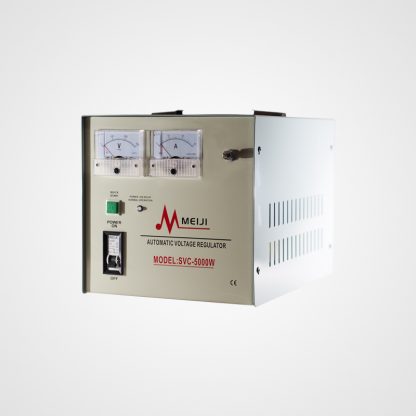What should you know about voltage fluctuations?
- What happens during voltage fluctuations?
- What are the causes of voltage fluctuations?
- What can you do to prevent voltage fluctuations?
There’s an extensive list of potential electrical hazards that every electrical company in the Philippines warns people about. Most of the time, though, people are more aware of common electrical problems such as brownouts and blackouts because they’re usually stated in the news and happens on a relatively large scale.
Because of this, there are very few discussions about lesser known electrical problems such as voltage fluctuations. These are actually quite common as well, especially in places where there’s a lot of potential obstructions to transmission lines or problems in the electrical system of a structure.
With that being said, compared to blackouts, voltage fluctuations are a lot easier to prevent because it’s something that you can modify yourself!
What happens during voltage fluctuations?
Voltage fluctuations are systematic variations of the voltage envelope or simply put, random voltage changes. However, this change doesn’t normally exceed the regular voltage range.
Voltage fluctuations can be categorized into two: Step-voltage changes that can be regular or irregular in time and cyclic/random voltage changes that are produced by variations in the load impedances.
When this occurs, the appliance affected will experience a significant degradation in its performance. The volatility of the internal voltages and current of the electrical system may be affected as well.
Voltage fluctuation is usually the fault of the provider or the grid system being tampered with. In any case, the best way to spot voltage fluctuations throughout your home is the sudden flickering of your lights. Flicker is described as a continuous and rapid variation in the load current magnitude. This is believed to be caused by voltage variations.
At home, the most common signs of voltage fluctuation include display screens or any electronic device with a light source flickering, other electronic equipment failing to start up, and televisions or radios experiencing interference.
If left unattended, voltage fluctuations can lead to some electronic devices malfunctioning. For example, incandescent bulbs might break due to it being designed for a specific voltage only.
What are the causes of voltage fluctuations?
Unlike the more common electrical issues that happen at home, the causes of voltage fluctuations are hidden from view and unheard of most of the time. Aside from one or two warnings from an electrical company in the Philippines, you would most probably not even think of a voltage fluctuation as one of your home problems.
That being said, it’s way better if you know the cause of your electrical problems so that you know what to do if ever you experience it! Here are the most common causes of voltage fluctuations:
- Poor supply of electricity. Before assuming that something bad happened to your electrical system, you should first question the integrity of your power supply. It might be the result of poor power flow or simply a sign that you’re using a low capacity transmitter to transfer power from your main supply. This might also be because of faulty appliances that draw in more electricity than usual.
- Wiring issues. Another possible cause of voltage fluctuation is improper wiring. This can lead to irregular electrical supply and inconsistent voltage fluctuations when left unchecked. Issues might also stem from the way that wires were manufactured. Improperly fabricated electric wires might not have the capacity to carry the required amount of power for your house, let alone an entire commercial building.
There’s also the possibility of pests damaging your wires, so don’t rule out voltage fluctuations to outdoor causes immediately!
What can you do to prevent voltage fluctuations?
Aside from directly fixing electrical wiring in your home and repairing faulty equipment (both of which are highly recommended when you have the chance) one of the best ways to solve this problem is to simply get a voltage protector! In the Philippines, there are many electrical companies that already offer such a device.
As the name suggests, the primary function of voltage protectors is to protect appliances from a sudden increase or decrease in voltage. Remember, for an appliance to work properly, it has to be supplied with the correct voltage. Overvoltage and Undervoltage are both something that you don’t want to happen to your appliances. Not only will this affect your appliances, but it might also lead to them malfunctioning or getting damaged.
Aside from that, other devices that help protect against voltage fluctuations are UPS or uninterruptible power supplies. In fact, this all-encompassing system is said to be able to prevent many of the different power-related problems there are!
Key Takeaway
As people say, prevention is better than a cure. That saying remains relevant even when the main focal point is machines and appliances. Make the most out of your uninterruptible power supplies or voltage protectors in the Philippines to help protect your electrical appliances!



